It’s not easy to follow into Christophe Leribault’s steps at Petit Palais and Annick Lemoine was very graceful in acknowledging the remarkable work he has accomplished in his almost ten years there, as director. The new show “Albert Edelfelt, Lumières de Finlande” (Lights from Finland) is the last of the Nordic series which included, Sweden with the exceptional Anders Zorn and Denmark. It traces the career of this painter, Albert Edelfelt (1854-1905), who led the way to Paris for his compatriots, and was a great friend of France as well as a constant promoter of the independence of his country from its powerful Russian neighbor. His lively portrait of scientist Louis Pasteur, just after he discovered the vaccine against rabies, features in all French school books. I particularly liked the tenderness he includes in his portraits of women and children as well as his delicate snowy landscapes.
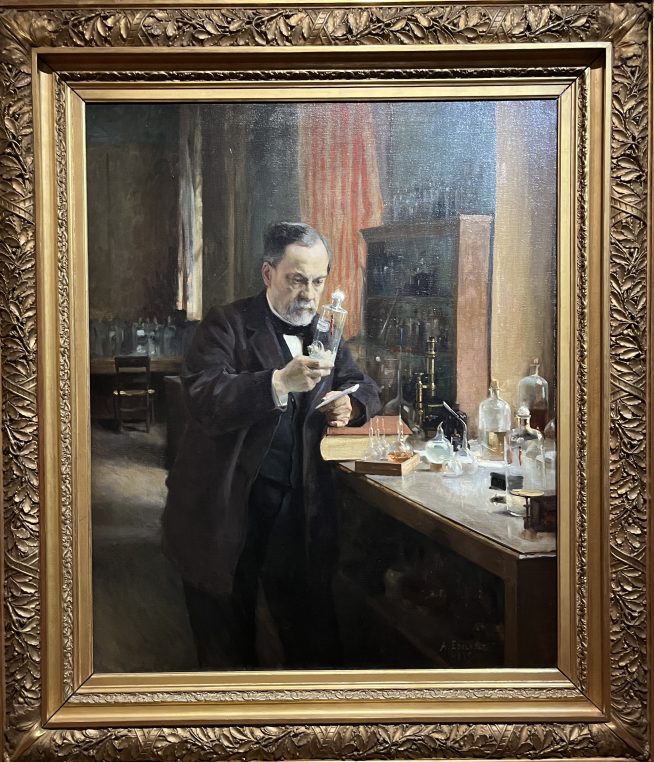
Portrait of Louis Pasteur, 1885, Versailles, Musée national des Châteaux de Versailles et de Trianon, deposited at Musée d’Orsay
The dynamic between the two museums involved in the show, Le Petit Palais and the Ateneum gallery of Art in Helsinki was excellent and out of the one hundred paintings which travelled, fifty are masterpieces as the two curators mentioned. They will travel to the Göteborg Museum in Sweden and then to the Ateneum in Helsinki. The various landscapes painted in the summer light made me want to discover the shores of Finland very soon.
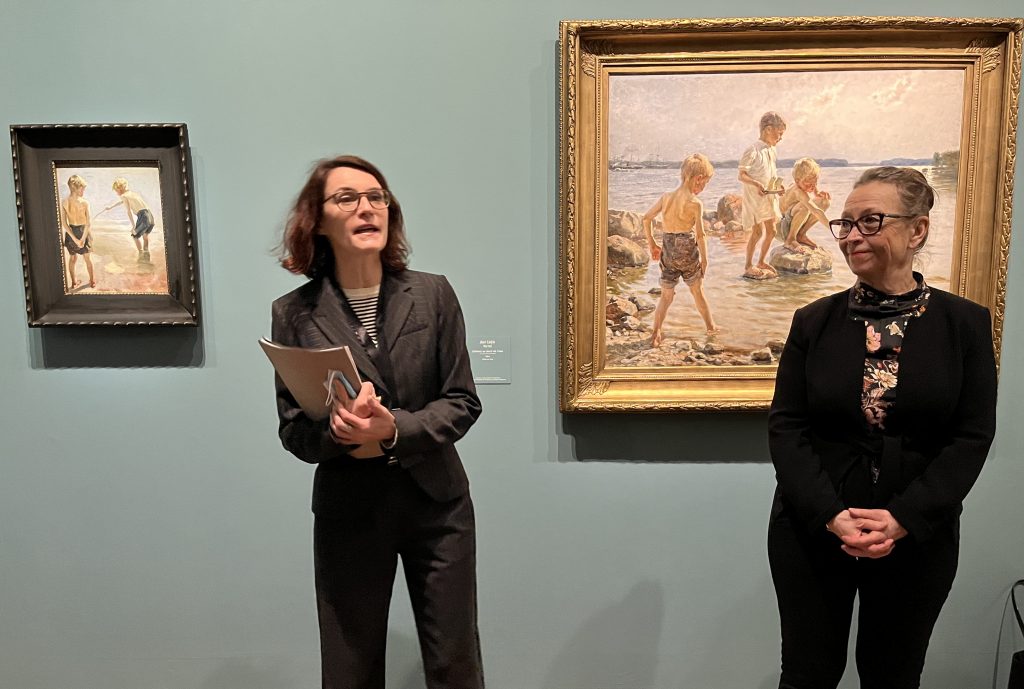
Annick Lemoine, director of le Petit Palais, with Maria Sakari, director of the Ateneum museum in front of “Children by the water “
Edelfelt was the son of a Swedish architect and lived in the old town of Porvoo on the South coast of the country. He was surrounded by women, three sisters, his mother and an old maid and learned early to capture the feminine soul. He first studied in Antwerp and then in Paris, at Ecole des Beaux Arts in Gérôme’s class, in 1874. He will remain there permanently until 1889 spending the summers in Finland. His first paintings have historical themes and open air sceneries on the lakes and in the snow. His depictions of sail boats, fishing boats and harbors in the strong sun are delightful and the day of the opening the sun was shining in a similar way over Paris. But of course what is most interesting for me, is the way he depicts people: the religious services on the seaside in the Pellinki archipelago, the workers coming home at night on their boats, the young lady on a boat and the sexy scene “At the piano” where a man embraces the young girl playing the piano.
He is particularly good at painting children whether at the Luxembourg gardens with their nannies or in an orphanage where he captures young apprentice tailors. The light is always warm and sunny. Edelfelt spends every summer in Haikko in Finland, where he paints workers, church scenes, lakes and forests, and the eternal summer light. In this country which is so close to Russia (young Russians are fleeing by train to Helsinki this week), he finds national themes incarnated by the most famous singers of the time, Larin Paraske or Aïno Ackté, by fishermen, and becomes a major diplomatic voice at the Universal Exhibition of 1900 in Paris, when he is made commissaire of the Finnish pavilion.

Blanche of Namen, Queen of Sweden and Prince Haquin, (The White Queen), 1877, Helsinki, Atheneum Museum of Art
On the evening of the opening, at the Finnish Embassy, which is conveniently located on place de Finlande, the ambassador Teemu Tanner gave a charming reception for the curators and the former President (for 12 years) of Finland, Tarja Halonen. The atmosphere was very friendly among the Alvar Aalto suspensions and Kirsi Kivivirta’s ceramic murals. Yet the conflict in Ukraine was present in everyone’s mind and little blue and yellow flower arrangements on the tables were a sensitive reminder of the proximity of the conflict. Delicious salmon sandwiches and other Finnish specialties were served as a teaser of the excellent nordic cuisine which will be served at the restaurant in the gardens of Petit Palais during the whole duration of the exhibition…
The ambassador’s son Ossi Tanner, a concert pianist, played a piece by Sibelius, the most famous Finnish composer. As he mentioned, he was a contemporary of Axeli Gallen-Kallela (1865-1931) who is exhibited at Musée Jacquemart-André until July 25. Born in Pori, a town which was Russian until 1917, he also came to work in Paris in the late 80’s and Edelfelt was his mentor. He established a studio in Kalela in a hard-to-reach area situated two hundred kilometers north of Helsinki where he lived very solitary and invited artist friends. He made some decorative panels based on Finnish legends as well as a very modern tapestry representing flames. His style of landscapes is more abstract and gives another image of Finnish art.
An exhibition is opening this week at Château de Maisons “1882, A Nordic Summer” when Adolf von Becker was joined by Albert Edelfelt and Gunnar Berndtson in spending the summer in the castle. They left a number of paintings which are being shown until June 27.
It is a coincidence that Finland, a country so close geographically to Russia and so often in conflicts with the Empire, is celebrated in Paris at the moment and it is wonderful to renew at last the very strong artistic relationship that our two countries shared at the end of the 19 th century.
Gallen-Kallela at Jacquemart-André until July 25. Albert Edelfelt until July 10 at Petit Palais. In the garden restaurant, chef Petteri Luoto, laureate of the Bocuse d’Or Prize, has prepared special Finnish dishes with salmon and blueberry crumble
Share this Post
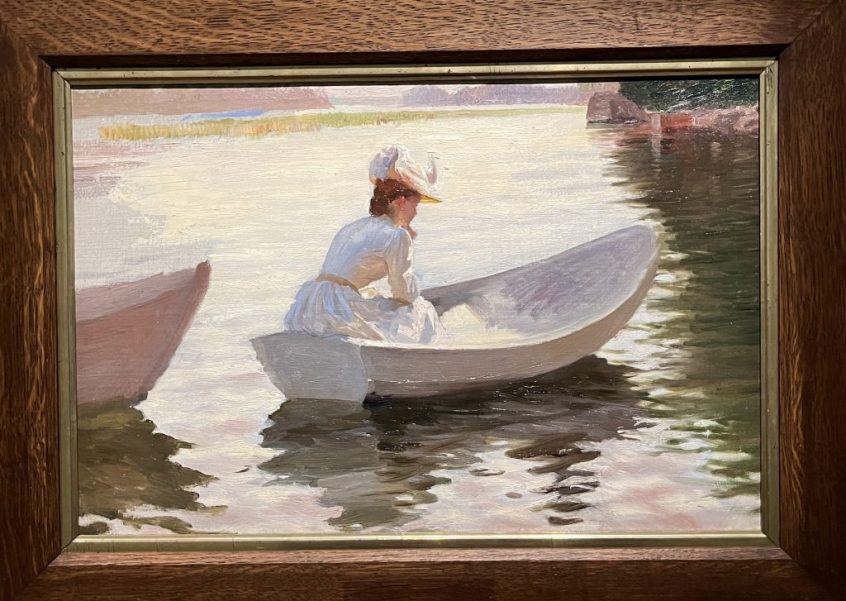
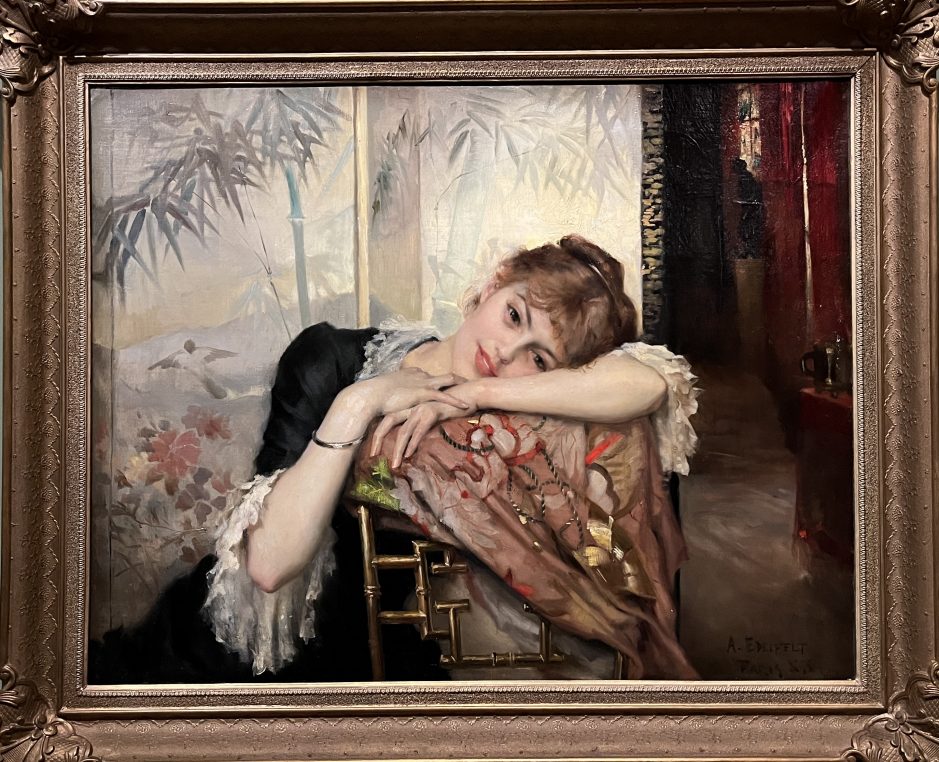
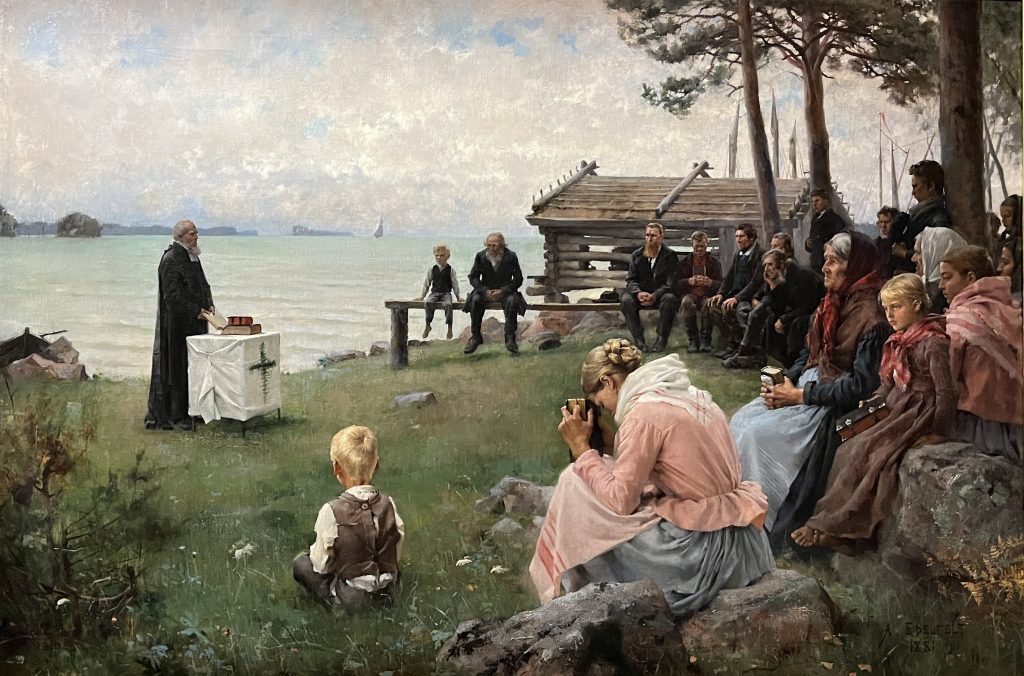

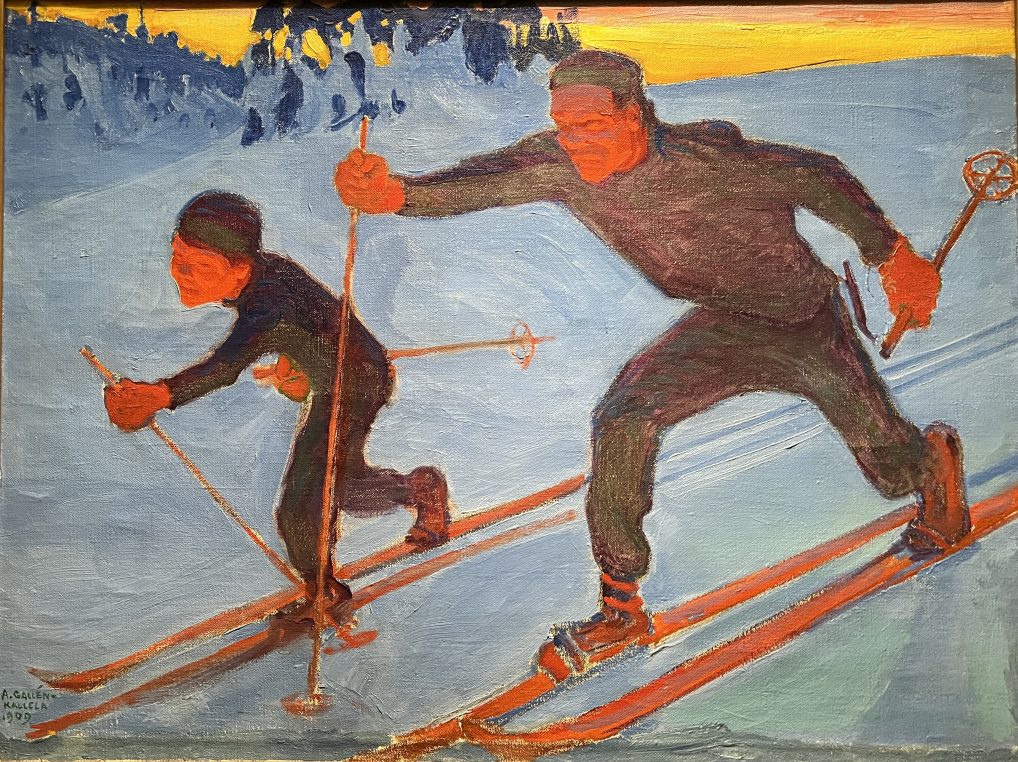
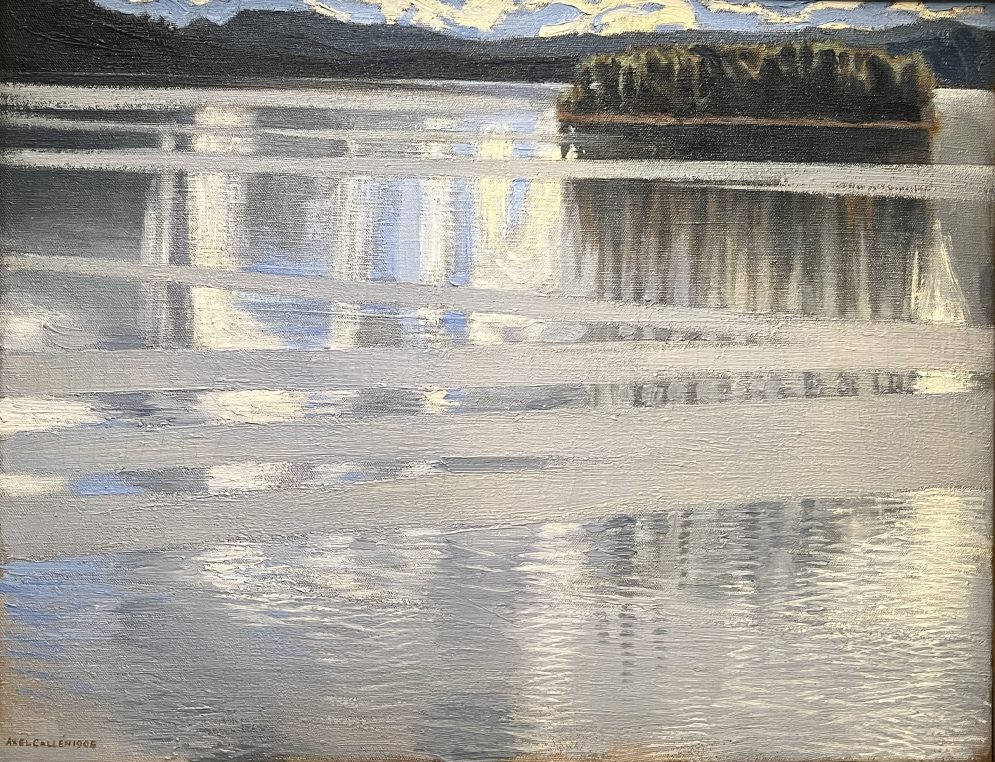
3 Comments on “Finland is everywhere with Edelfelt and Gallen-Kallela”
Lovely! Thanks Laure!
Thanks for the excellent visit thru your eyes, Laure. Your outreach is a work of art on its own.
Thank you very much for your excellent review. I wish I could travel to see both exhibitions myself.
One detail however caught my eye. You wrote about “Pori, a town which was Russian until 1917”. That is a bit misleading, since Pori – or any other Finnish town or city for that matter – was not Russian, Pori the least.
The Autonomous Grand Duchy of Finland – with own government, laws, money and almost everything else – was part of the (Russian) Empire 1809-1917, not Russia itself. There was even a customs border between the two countries.
The previous Emperors were wise enough to let the Finns be, until the last one, Nicholas II “the Oathbreaker”, broke his oath and started the poorly judged attempts to Russify Finland in 1899.